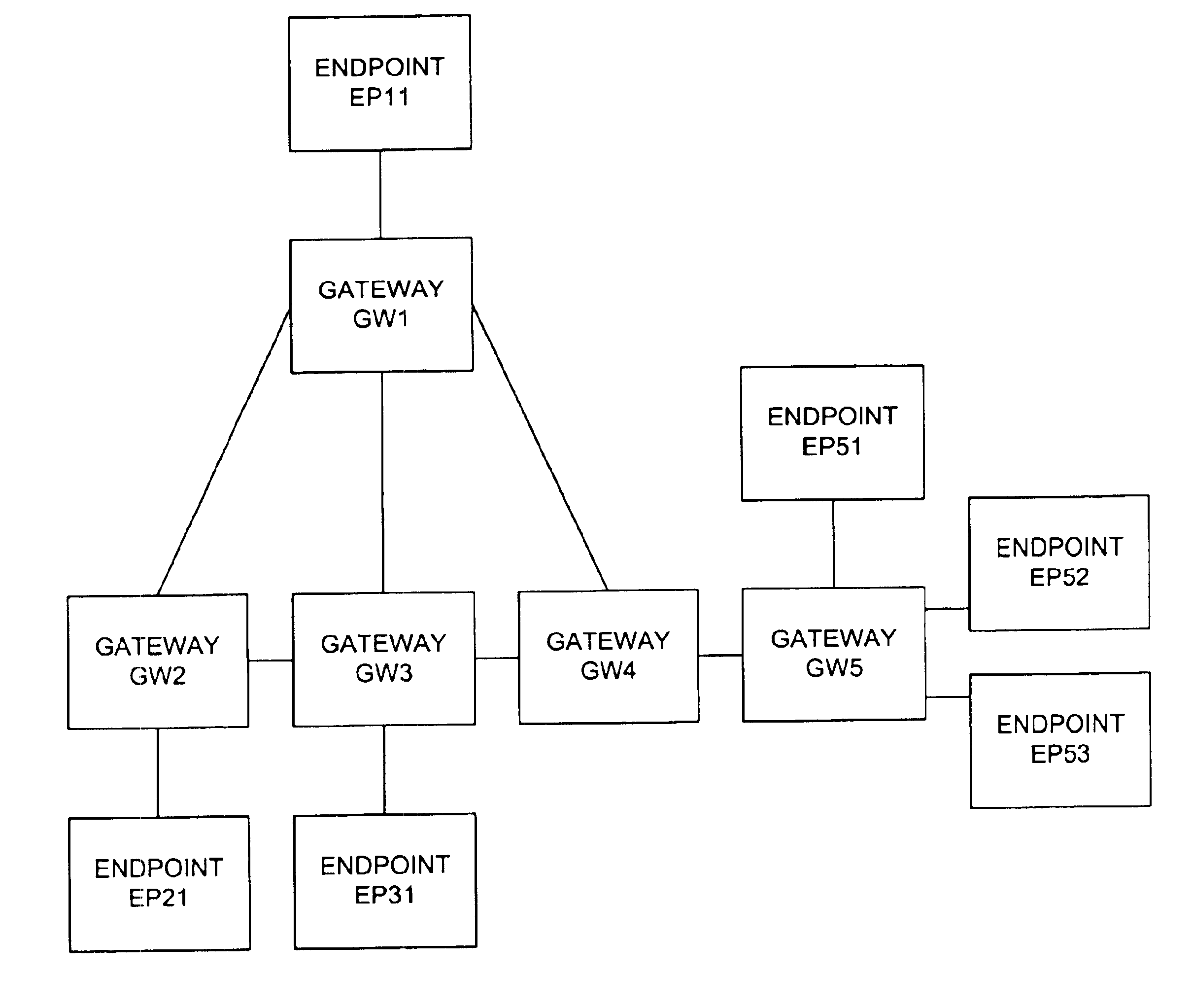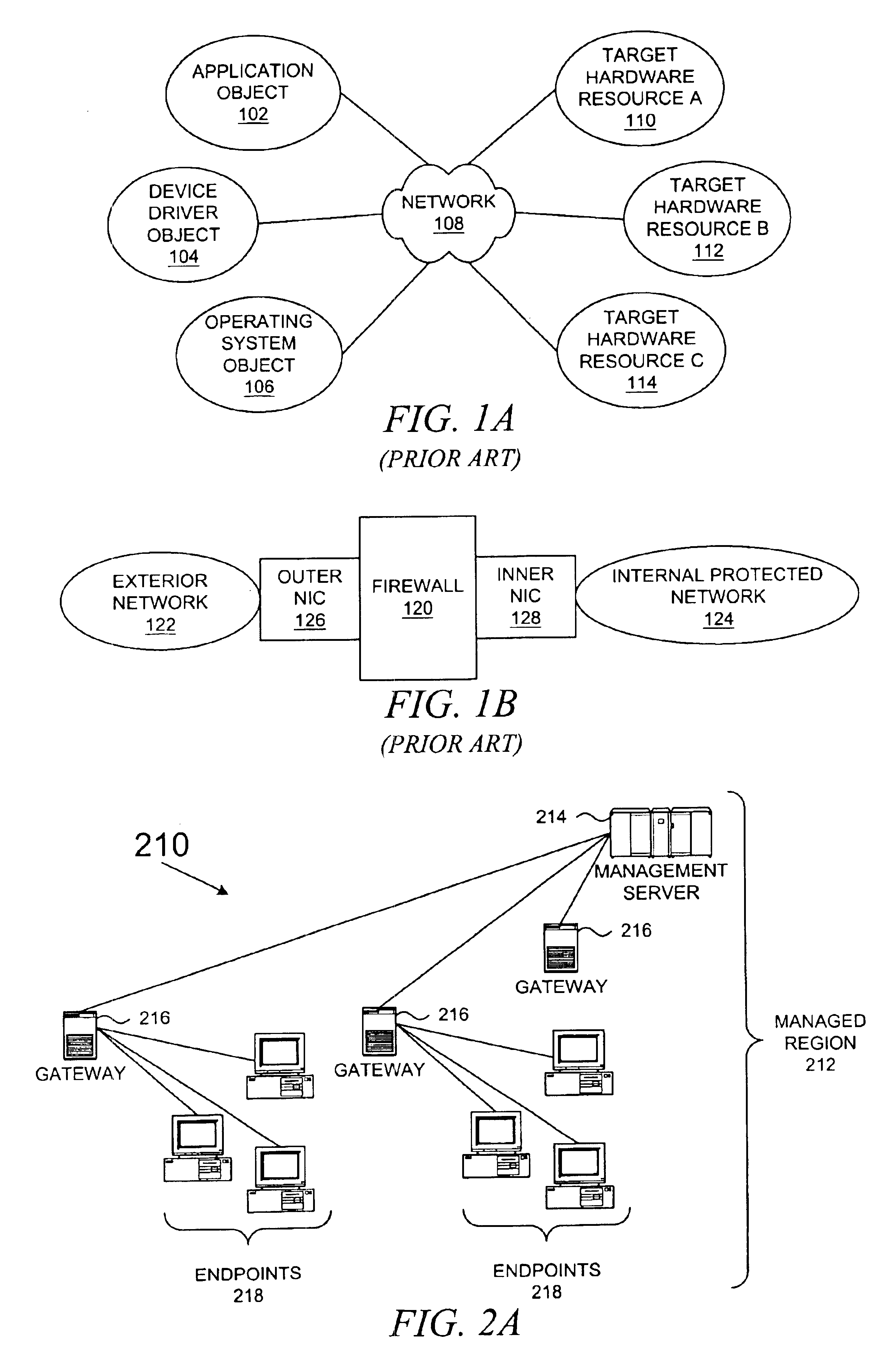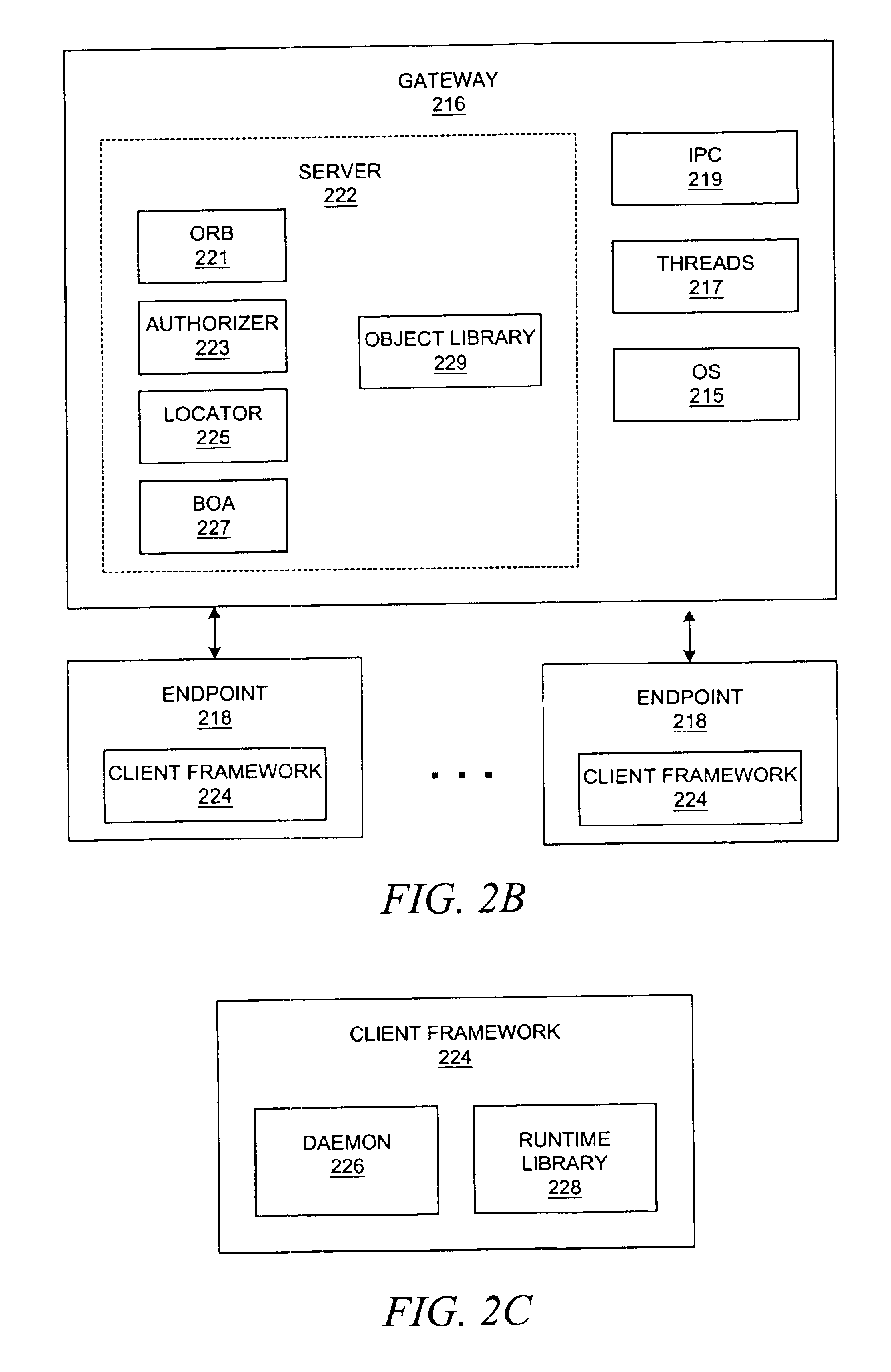Method and system for management of resource leases in an application framework system
- Summary
- Abstract
- Description
- Claims
- Application Information
AI Technical Summary
Benefits of technology
Problems solved by technology
Method used
Image
Examples
Embodiment Construction
[0044]With reference now to FIG. 1A, a diagram depicts a known logical configuration of software and hardware resources. In this example, the software is organized in an object-oriented system. Application object 102, device driver object 104, and operating system object 106 communicate across network 108 with other objects and with hardware resources 110-114.
[0045]In general, the objects require some type of processing, input / output, or storage capability from the hardware resources. The objects may execute on the same device to which the hardware resource is connected, or the objects may be physically dispersed throughout a distributed computing environment. The objects request access to the hardware resource in a variety of manners, e.g. operating system calls to device drivers. Hardware resources are generally available on a first-come, first-serve basis in conjunction with some type of arbitration scheme to ensure that the requests for resources are fairly handled. In some case...
PUM
 Login to View More
Login to View More Abstract
Description
Claims
Application Information
 Login to View More
Login to View More - R&D
- Intellectual Property
- Life Sciences
- Materials
- Tech Scout
- Unparalleled Data Quality
- Higher Quality Content
- 60% Fewer Hallucinations
Browse by: Latest US Patents, China's latest patents, Technical Efficacy Thesaurus, Application Domain, Technology Topic, Popular Technical Reports.
© 2025 PatSnap. All rights reserved.Legal|Privacy policy|Modern Slavery Act Transparency Statement|Sitemap|About US| Contact US: help@patsnap.com



